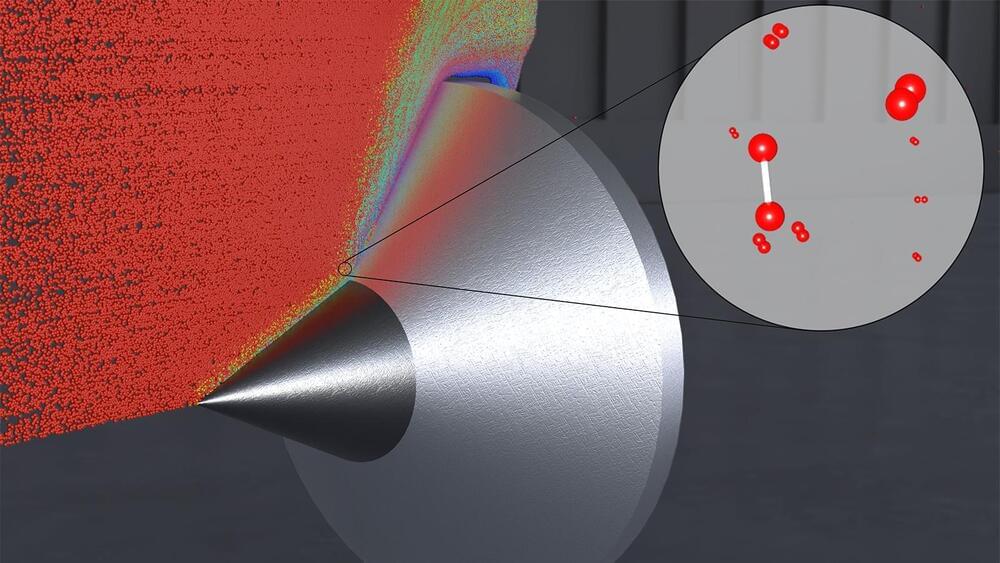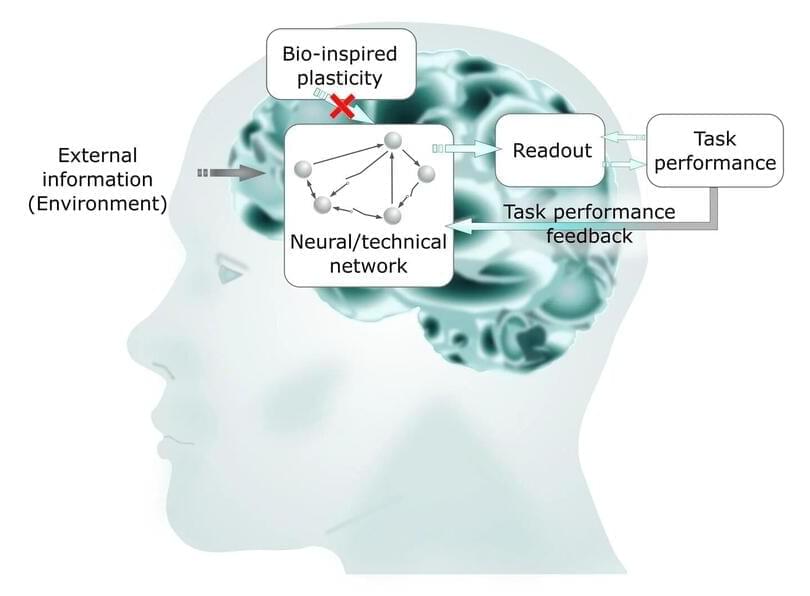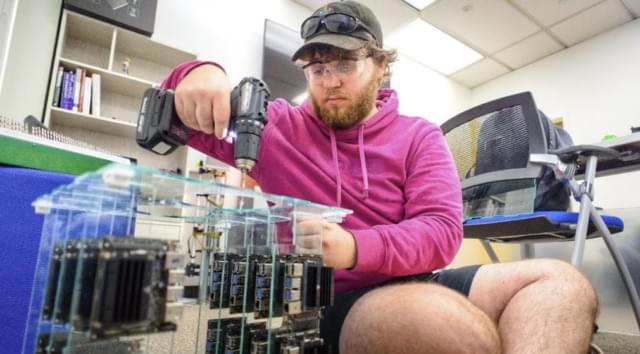Category: supercomputing – Page 55

The U.S. Department of Energy’s
The U.S. Department of Energy’s INCITE program has awarded supercomputing time to 56 projects!
Managed jointly by the Argonne Leadership Computing Facility and Oak Ridge Leadership Computing Facility, INCITE supports large-scale, computationally intensive projects that address “grand challenges” in science and engineering.

INCITE program awards supercomputing time to 56 projects to accelerate science and engineering research
The U.S. Department of Energy’s (DOE) Office of Science announced allocations of supercomputer access to 56 high-impact computational science projects for 2023 through its Innovative and Novel Computational Impact on Theory and Experiment (INCITE) program. These awards, which will pursue transformational advances in science and engineering, account for 60% of the available time on the leadership-class supercomputers at DOEs Argonne and Oak Ridge national laboratories.
The projects will support a broad range of large-scale research campaigns to advance knowledge in areas ranging from astrophysics to sustainable energy technologies to materials design and discovery.
Jointly managed by the Argonne Leadership Computing Facility (ALCF) and the Oak Ridge Leadership Computing Facility (OLCF), the INCITE program is the primary means by which the facilities fulfill their mission to advance open science by providing the scientific community with access to their powerful supercomputing resources. The ALCF and OLCF are DOE Office of Science user facilities.

The Gold In Our Galaxy May Be 10 Billion Years Old, Say Scientists
The hundreds of gold-rich stars discovered in our Milky Way galaxy may have come from smaller galaxies that merged 10 billion years ago, according to new simulations by a supercomputer.
Using the ATERUI II supercomputer in the Center for Computational Astrophysics at the National Astronomical Observatory of Japan, scientists at Tohoku University and the University of Notre Dame developed new simulations of galaxy formation with the highest resolution yet.
The paper was published this week in the Monthly Notices of the Royal Astronomical Society.
Quantum computers’ secret power: How they could dramatically boost energy efficiency
Could energy efficiency be quantum computers’ greatest strength yet?
Bartlomiej Wroblewski/iStock.
However, the question of its energy consumption could also now warrant research, with current supercomputers sometimes consuming as much electricity as a small town (which could in fact limit the increase in their computing power). Information technologies, at their end, accounted for 11% of global electricity consumption in 2020.


Examining the optimal working conditions for the brain as a model for new computers
With mathematical modeling, a research team has now succeeded in better understanding how the optimal working state of the human brain, called criticality, is achieved. Their results mean an important step toward biologically-inspired information processing and new, highly efficient computer technologies and have been published in Scientific Reports.
“In particular tasks, supercomputers are better than humans, for example in the field of artificial intelligence. But they can’t manage the variety of tasks in everyday life —driving a car first, then making music and telling a story at a get-together in the evening,” explains Hermann Kohlstedt, professor of nanoelectronics. Moreover, today’s computers and smartphones still consume an enormous amount of energy.
“These are no sustainable technologies—while our brain consumes just 25 watts in everyday life,” Kohlstedt continues. The aim of their interdisciplinary research network, “Neurotronics: Bio-inspired Information Pathways,” is therefore to develop new electronic components for more energy-efficient computer architectures. For this purpose, the alliance of engineering, life and natural sciences investigates how the human brain is working and how that has developed.

Digital Doubles and Second Selves
This time I come to talk about a new concept in this Age of Artificial Intelligence and the already insipid world of Social Networks. Initially, quite a few years ago, I named it “Counterpart” (long before the TV series “Counterpart” and “Black Mirror”, or even the movie “Transcendence”).
It was the essence of the ETER9 Project that was taking shape in my head.
Over the years and also with the evolution of technologies — and of the human being himself —, the concept “Counterpart” has been getting better and, with each passing day, it makes more sense!
Imagine a purely digital receptacle with the basics inside, like that Intermediate Software (BIOS(1)) that computers have between the Hardware and the Operating System. That receptacle waits for you. One way or another, it waits patiently for you, as if waiting for a Soul to come alive in the ether of digital existence.

Existential Hope: Creon Levit | On space and the long-term future
Are we alone in the universe? What could a future for humans in space look like? And what would Creon’s advise to Elon Musk be if he wants to make a self-sufficient mass colony there? This Hope Drop features Creon Levit, chief technologist and director of R&D at Planet Labs.
Creon Levit is chief technologist at Planet Labs, where he works to move the world toward existential hope via novel satellite technologies. He also hosts Foresight Institute’s Space Group.
Creon speaks on:
- His experiences working with NASA & Planet Labs.
- Natural systems technologies.
- Regenerative Agriculture.
- His vision for the future.
- And much more!
Creon is chief technologist and director of R&D at Planet Labs, and a Foresight Institute senior fellow. He previously worked at NASA Ames Research Center in Silicon Valley, where he was one of the founders of the NAS (NASA Advanced Supercomputing) division, co-PI on the Virtual Wind Tunnel project, co-founder of the NASA Molecular Nanotechnology Group (the first federally funded research lab devoted to molecular nanotechnology), co-PI on the hyperwall project, investigator on the Columbia accident investigation board, member of the NASA engineering and safety center, investigator on the millimeter-wave thermal rocket project, the Stardust re-entry observation campaign, PI on the LightForce project, special assistant to the center director, and chief scientist for the programs and projects directorate.
Submit your contribution to the storytelling bounty from Creon’s prompt to “Imagine a shift in human nature where we could all have love, community, technology, and adventure, as well as lack of severe hardship or fear.” here: https://680d4kcs6ki.typeform.com/to/jHROTs6z.